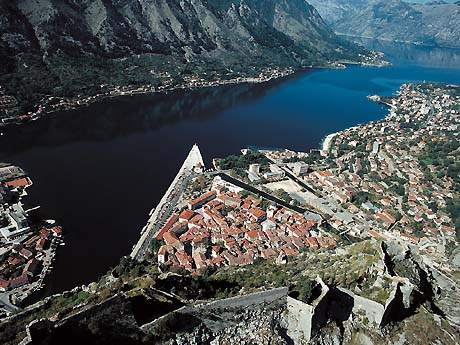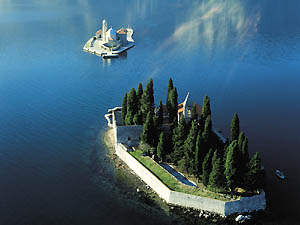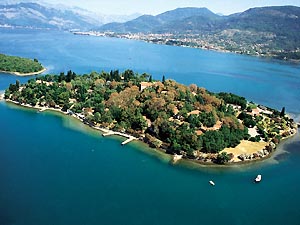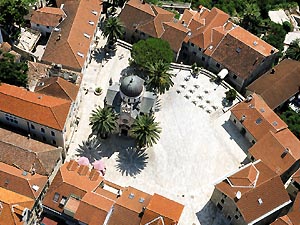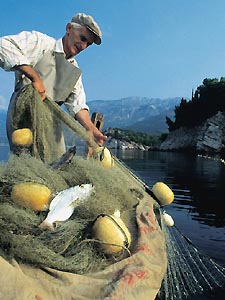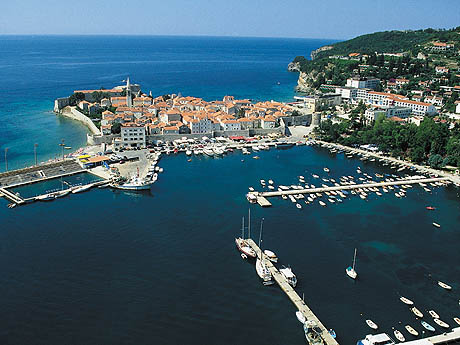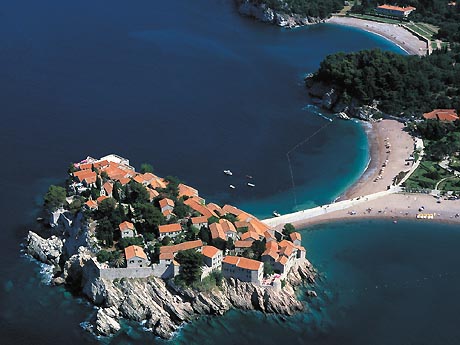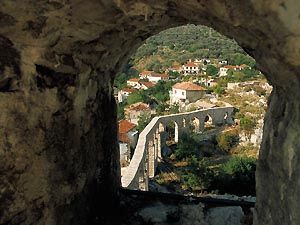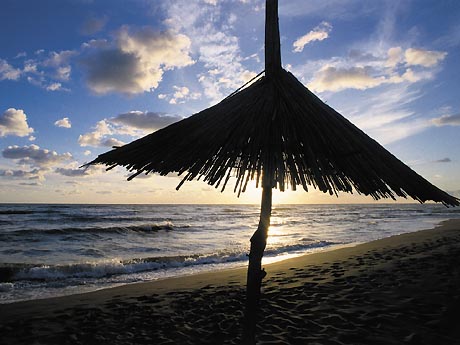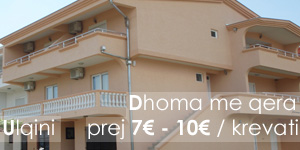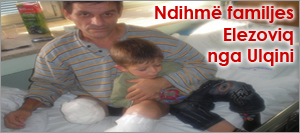Along the coast of Montenegro
Written by Stefan Djukanovic and Aleksandar Milakovic
Montenegro is now the youngest state in the world, being independent since June 2006. With an area of only 13,812 square kilometres we find a great number of contrasts. On this small area there are four national parks, four different climate types, and one of the 25 most beautiful fjords in Europe (as proclaimed in Corsica in 2000). We start our tour along the coastal area of Montenegro from the ancient town Kotor, in front of whose walls Montenegro Charter Company’s base is situated.
|
||
Kotor is situated at the end of the Boka Kotorska (“Bay of Kotor”) and it represents one of the rare Mediterranean trade centres which has been preserved to the present day its medieval looks. Here you will find traces of cultures dating back to the beginning of civilisation.
Numerous rulers have left their marks and these were all reasons for Kotor to be protected by UNESCO (1979 Luxor) as a World Heritage Site.
For visitors to Kotor, some of the most interesting places are the old city walls dating back as far as the9th Century. Walls some 4.5 km long (3rd in the world by length) are in places 20 m high and 16 m wide, and they represent one of the longest and best preserved fortifications on the wider area of Mediterranean.
Only 5 nm NNW from Kotor, there is the small baroque town of Perast. The place has a very interesting history. It is situated on the hill St Ivan, which gives almost no basic conditions for survival.
When the inner part of the Boka Kotorska was governed by the Venetians, and the outer part belonged to the Ottoman Empire, Perast became extremely strategically important.
Citizens of Perast (in that period Perast had only 300 citizens) became privileged in the Venetian Republic. They were allowed to trade with large ships and to sell goods without tax on the Venetian market, which made them very rich.
As an example of the wealth of people from Perast, at the end of 18th century they managed to collect 50,000 Venetian gold coins (about 200 kg of gold) in order to pay the famous Venetian constructor Giuseppe Beati to build them the highest campanile (55 m) on East-Adriatic coast.
From the sea our eye is caught by the palaces of families Bujovic, Smekja, Zmajevic with the church Gospa od Rozarija (“Our Lady of Rosario”).
|
||
Right in front of Perast there are two small islands. St George with it’s small church from the 12th century and the artificial island Gospa od Skrpjela (“Our Lady of the rock”) with a very interesting legend.
On the reef whose top was 1m above the surface of the water, people from Perast had been throwing rocks and sinking old shipwrecks for 200 years, thus creating a plateau of 3,030 square meters, which they then built a church on.
Along with the impression that the island gives with its architecture, for centuries the church received many gifts and now it is a type of gallery and treasury of various objects. Beside 68 oil on canvas works, work of the most talented baroque painter on the East-Mediterranean coast from 17th century Tripo Kokolja, on the church walls there are 2,500 golden and silver votive tablets which people from Boka donated to the church in order to avoid various human disasters.
|
||
Near Perast we see Risan, the place where the last Illyrian queen Teuta had her residential palace until 167 b.c., and many archaeological findings prove that.
Sailing to the open sea, through the ravine Verige (30 m wide) we leave the internal part of the Boka Kotorska which is also under the protection of UNESCO. On our left side there is a great view of the town of Tivat, which is even more beautiful because of the Ostrvo cvijeca (“Island of Flowers”) and Gospin otok (“Island of Our Lady”).
Further on we come to town Herceg Novi, which is 14 nm from Kotor.
|
||
Four fortification objects make Herceg Novi look beautiful, particularly when viewed from the sea. The oldest fortress, Spanjola, is from the 15th century. Kanli kula, from the 16th century, used to be a prison and that is the reason why it was named Bloody Tower (kanli = bloody). Today, it represents one of the most beautiful summer stages on the Mediterranean Sea.
There is also the fortress Forte mare (Sea fortress), where we now have a cinema, a discotheque and a fortress; Citadela. In the bottom of the city there is a sailing club with a very favourable marina.
We leave Kotorska Bay, on the entrance of which there are two beautiful fortresses from Austro-Hungarian period. On the left side is Arza, Mamula is on the island and Cape Ostro on the right side.
|
||
Sailing along the Montenegrin coast we continue on the open sea to the SE (southeast). We are passing by rocky and inhabited areas all the way to the fishing village of Bigova, which is situated in a small and well protected bay.
Bigova is 22 nm from Kotor, and it represents ideal place for our first night. This bay is very suitable for anchorage and there is also a pier with depths from 2 m to 4 m where there is enough space for six boats. Right next to the pier there is an exquisite fish restaurant in the authentic Mediterranean style.
We start our second day with sailing to Budva, which is 12 nm from Bigova. 3.5 nm from Bigova there are shallow waters, Seka Albanesa, which are marked only with day marks. So in case of night sailing one should be very careful. Before Budva, there is a sandy beach Jaz. When approaching Budva, the fairway marked with buoys from both sides should be used.
Old town Budva belongs to the group of the oldest settlements on the East Mediterranean coast. During the construction of the first hotel, Avala, in 1938, Necropolis was unexpectedly found in front of the walls of Budva. Jewellery and pottery found there, tell us that in the 5th century BC some important and rich persons stayed here.
With its position, cutting deep into the sea, Budva was always the target of conquerors. Crusaders stayed there in 1096, during their first crusade, led by count Raymond of Toulouse, than Richard the Lionheart, at the beginning of 13th century.
All rulers from the prehistoric period until the present time have left their marks which are still preserved. Narrow curved streets with small plazas and buildings give Budva the charm of a typical Mediterranean place. Budva’s walls were torn down and rebuilt many times, but they have had their present form since the middle-ages. Traces of Antique, Roman, Byzantine, Venetian and Austro-Hungarian styles of architecture can be seen on them.
|
||
The marina, which is in front of the old town, is well protected from the waves and wind and therefore is extremely well visited.
Further along the coast, just near Budva there are the most beautiful beaches on the East Mediterranean coast. One of them, Becicka plaza (beach of Becici) was awarded, in 1937, the grand prix Golden Palm as the most beautiful in Europe.
The cleanness of the water, level of insolation, the position of the beach in regard to the sun, diversity of colours and granulation of pebble (2-4 mm) and the length of the beach (about 2 km) haven’t changed and the beach is as attractive now as it was then.
|
||
The origin of the Sveti Stefan peninsula takes us back to the 15th century. On the top of the island there is a church. The authenticity of the Mediterranean architecture inspired tourism authorities to reconstruct small village houses and equip them luxuriously. In 1963, the island began a new life as an exclusive town-hotel.
On our journey to Ulcinj, our final destination, many coves and beautiful sandy beaches will draw our attention.
Only 7 nm from Budva is a fisherman’s place, Petrovac, which, according to remains of villas from the Roman period, inhabited in ancient times. The Mediterranean climate and lovely pebble beach made Petrovac become a popular summer resort with numerous villas and hotels.
|
||
Further on we come to Bar, a place where the most dominant European religions and cultures found harmony (Orthodox church, Catholic church and Islam). Visitors are fascinated by churches with two altars and graveyards where both orthodox and catholic people are buried.
The medieval church bells were modified into minarets and than changed back to church bells – so, on one object you can see mixtures of different religions and cultures. It is similar to the customs and culture of the inhabitants, so certain religious cults are celebrated by Orthodox believers, Catholics and Muslims (the Cross of St. Jovan Vladimir). Especially interesting is the olive tree said to be more than 2,000 years old, which is one of the oldest in Europe.
On the hill Volujica in1904, the radio station (Markoni) was constructed and first radio connection was established between the east and west Adriatic coast. Even today it serves sailors for establishing communication.
Slowly, we are entering the area of Ulcinj with the river Bojana, which cuts Dinaric massif and represents border between Montenegro and Albania.
Our first impression of Ulcinj, viewed from the sea, is of its attractive sandy beaches. The 1,300 m long beach in the inlet Valdanos, which with olive wood in the back gives a real taste of the Mediterranean.
Ulcinj Town beach (Gradska ulcinjska plaza) 650 m long with exquisitely fine sand is especially attractive. 12 km long Velika plaza offers the greatest pleasure to numerous tourists during the summer season. Than we have 4 km long Ada Bojana, the famous nudist camp.
Beaches are not the only thing Ulcinj can offer, there is also old town Ulcinj. According to ancient writers it was founded by the people of Kolhida in 4th and 5th century BC, and Old Po and the proof for that is written traces in Cyclopean walls and foundations of old town.
In the old town people traded with different goods, but today we find interesting the square of slaves. The legend says that Miguel Cervantes had spent several years as a slave in Ulcinj and named his main female character of his work Don Quijote Dulcinea (Ulcinj = Dulcinium). This mixture of cultures created numerous craftsmen, of which the best known are the goldsmiths from Ulcinj who sell relatively cheap, unusual, handmade gold and silver jewellery.
|
||
Further on to the south, 8 nm from Ulcinj is Ada Bojana, a place where we end our pleasurable sailing along the Montenegrin coast which is about 300 km long. Some visitors have named Ada Bojana “a piece of heaven”, and it is exactly that.
It was founded in 1858, when the boat Merito from Trogir ran aground in shallow waters. After some time, around it the island was created by river drift. It is now of stable dimensions and covered with Mediterranean vegetation, well known as resort and nudist village.
During our whole journey we had north-west winds of 15-17kn, which gave freshness to hot summer days and was very favourable- so our speed was higher than it would be if we used motors.

